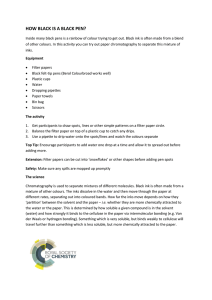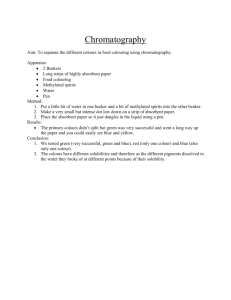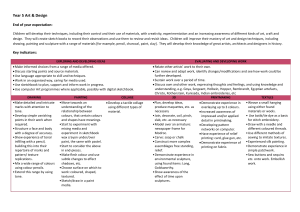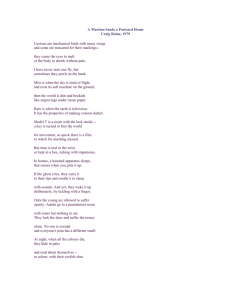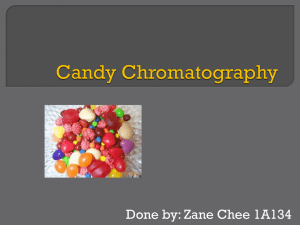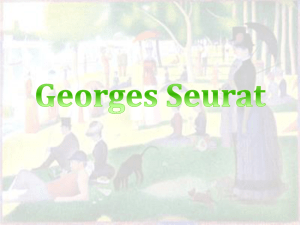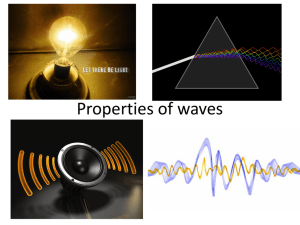Worksheets 05¥
advertisement
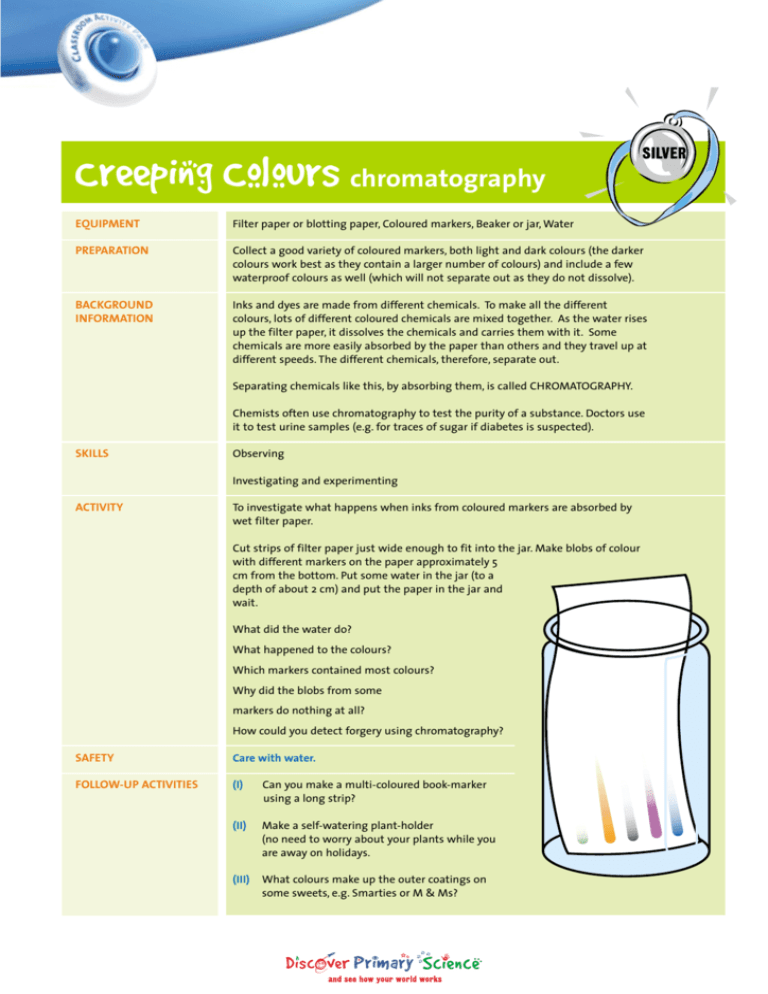
Creeping Colours chromatography EQUIPMENT Filter paper or blotting paper, Coloured markers, Beaker or jar, Water PREPARATION Collect a good variety of coloured markers, both light and dark colours (the darker colours work best as they contain a larger number of colours) and include a few waterproof colours as well (which will not separate out as they do not dissolve). BACKGROUND INFORMATION Inks and dyes are made from different chemicals. To make all the different colours, lots of different coloured chemicals are mixed together. As the water rises up the filter paper, it dissolves the chemicals and carries them with it. Some chemicals are more easily absorbed by the paper than others and they travel up at different speeds. The different chemicals, therefore, separate out. Separating chemicals like this, by absorbing them, is called CHROMATOGRAPHY. Chemists often use chromatography to test the purity of a substance. Doctors use it to test urine samples (e.g. for traces of sugar if diabetes is suspected). SKILLS Observing Investigating and experimenting ACTIVITY To investigate what happens when inks from coloured markers are absorbed by wet filter paper. Cut strips of filter paper just wide enough to fit into the jar. Make blobs of colour with different markers on the paper approximately 5 cm from the bottom. Put some water in the jar (to a depth of about 2 cm) and put the paper in the jar and wait. What did the water do? What happened to the colours? Which markers contained most colours? Why did the blobs from some markers do nothing at all? How could you detect forgery using chromatography? SAFETY Care with water. FOLLOW-UP ACTIVITIES (I) Can you make a multi-coloured book-marker using a long strip? (II) Make a self-watering plant-holder (no need to worry about your plants while you are away on holidays. (III) What colours make up the outer coatings on some sweets, e.g. Smarties or M & Ms?
